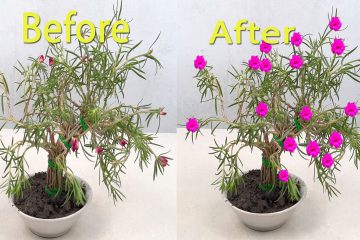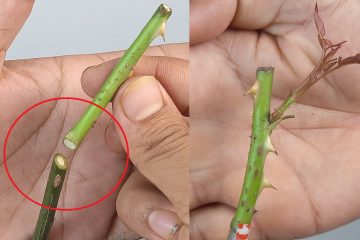Propagating hibiscus from cuttings is a rewarding way to create new plants. Here’s a step-by-step guide:
1. Timing is Key: The best time to take hibiscus cuttings is during the plant’s active growing season, typically in late spring to early summer. This is when the plant’s growth hormones are most active, increasing the chances of successful rooting. Softwood or semi-hardwood cuttings (new, flexible growth) tend to root best.
2. Selecting and Preparing Cuttings:
- Choose healthy stems: Look for stems that are about 4-6 inches long, healthy, and disease-free. Avoid stems with flowers or buds, as the plant will focus energy on blooming instead of rooting.
- Make clean cuts: Using clean, sharp pruning shears or a knife, make a diagonal cut just below a leaf node (the point where a leaf joins the stem).
- Remove lower leaves: Strip off all leaves from the bottom half of the cutting. If the remaining leaves are very large, you can cut them in half horizontally to reduce moisture loss.
- Optional: Apply rooting hormone: While not essential, dipping the cut end of the stem in rooting hormone (powder or liquid) can significantly increase the success rate and promote faster, more vigorous root growth.
3. Rooting the Cuttings (Water vs. Soil):
You have two main options for rooting your hibiscus cuttings:
-
Water Propagation (Good for monitoring root growth):
- Fill a clear glass or jar with 1-2 inches of warm water.
- Add a few drops of hydrogen peroxide to the water to help prevent bacterial growth.
- Place the cuttings in the water, ensuring that no leaves are submerged (they will rot).
- Place the container in a bright area with indirect sunlight. Avoid direct sun, as it can make the water too warm.
- Change the water every few days to keep it clean and fresh.
- You should see white bumps (callus tissue) appear in about a week, and roots should start forming within 4 weeks.
- Once the roots are a few inches long and have started to turn from white to a light tan, they are ready to be planted in soil. This can take 2-4 months.
-
Soil Propagation (Often preferred for more mature cuttings):
- Prepare a pot (around 4 inches) with a well-draining potting mix. A good mix can include peat, perlite, sand, or coco coir. Avoid plain potting soil, which can be too dense.
- Use a pencil or your finger to make a hole in the soil for each cutting. Avoid pushing the cutting directly into the soil, as this can damage the stem and remove rooting hormone.






















